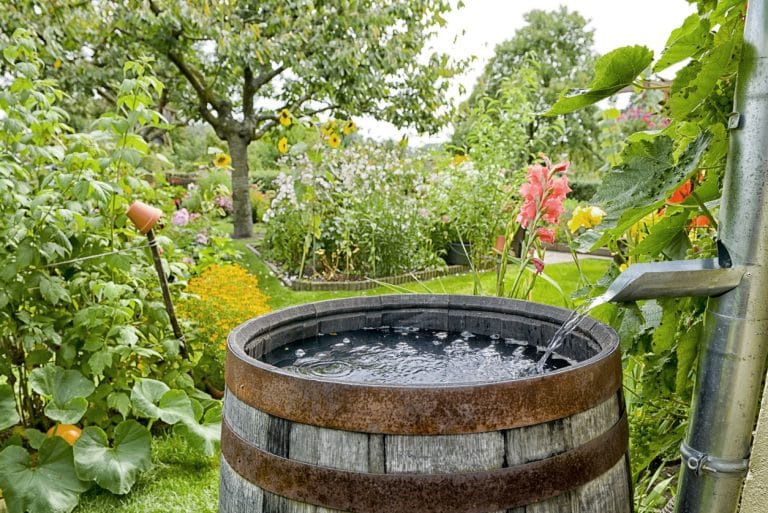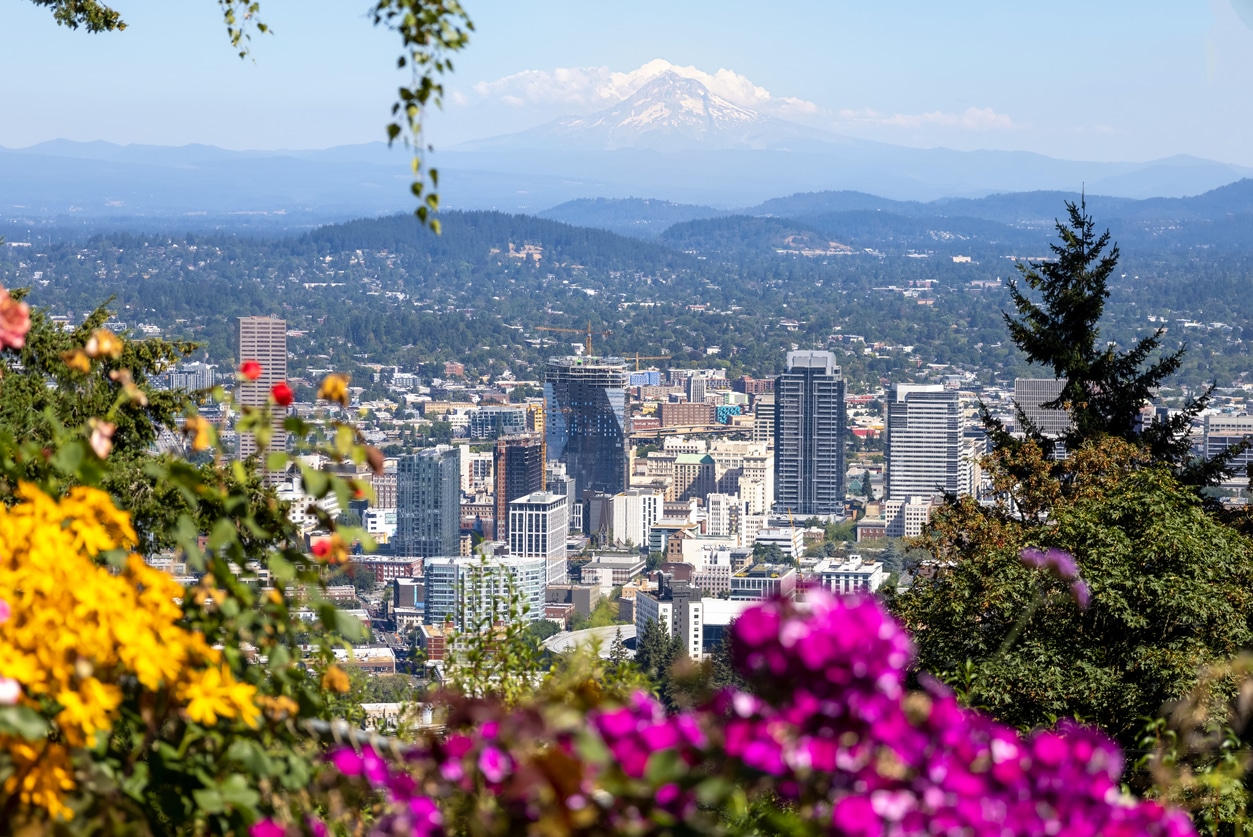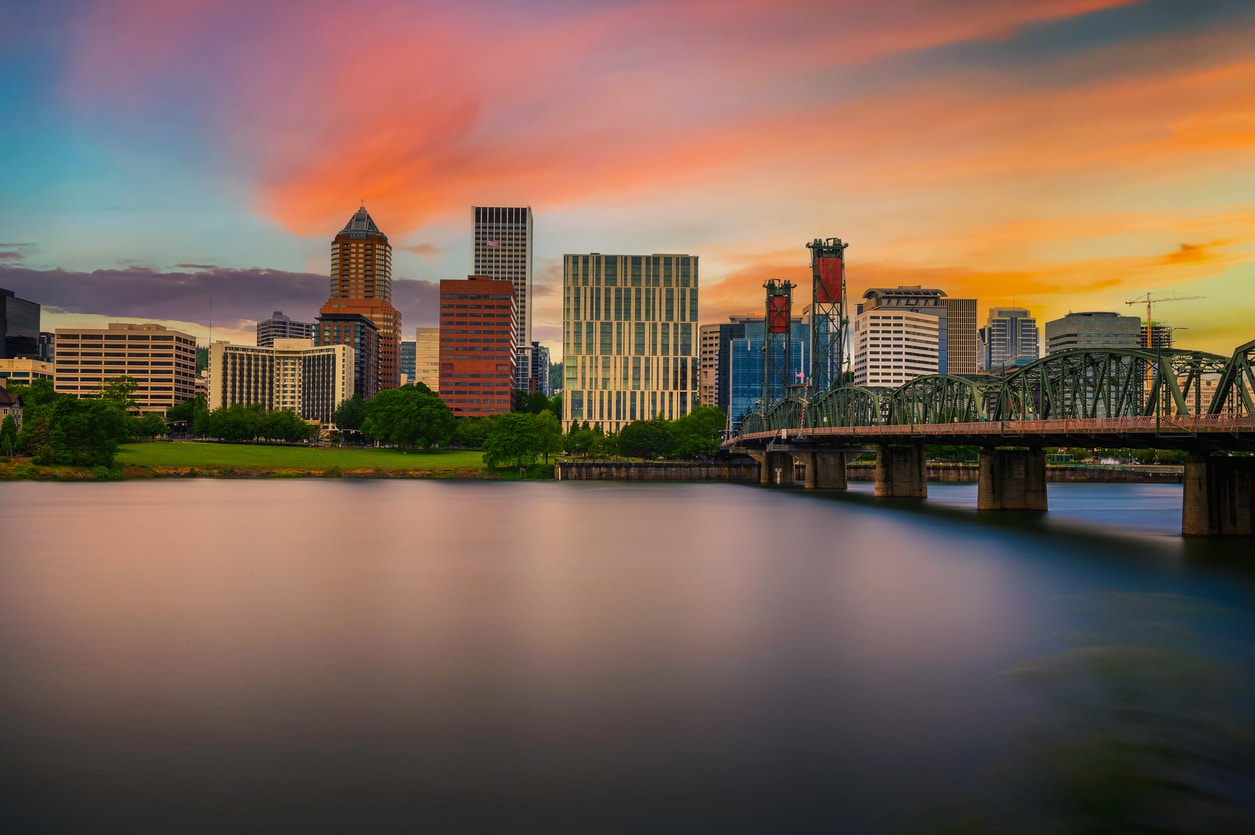Rain Barrels, Rain Gardens for your Portland Home

Did you know that Portland gets an average of 37 inches of rain per year? That’s a lot of storm water! To make matters worse, in the early 19th century when Portland was being constructed, planners followed the standard practice of putting all wastewater into a combined system. That means that household sewage and regular old rainwater flow together into the same pipes, which can sometimes overflow at the lowest points in the system, near the Columbia and Willamette rivers.
For decades, Portland saw up to 50 Combined Sewage Overflows per year. The amount of untreated sewage going into the rivers as a result of these overflows made them unsafe. Then, beginning in 1991, we embarked on a massive, decade-long infrastructure project to control the problem. Now, overflows still happen, but they’re far less common — the city estimates 4 or 5 events per year. Meanwhile, the Willamette River is clean enough to swim in and property owners are playing their part in managing storm water to reduce the number of events even further.
Now, overflows still happen, but they’re far less common — the city estimates 4 or 5 events per year. Meanwhile, the Willamette River is clean enough to swim in and property owners are playing their part in managing storm water to reduce the number of events even further.
If you own a home or property in Portland, you can reduce stormwater runoff by installing rain barrels and/or building a rain garden. You can even get money back on your project if your home is in East Multnomah County
Rain Barrels – Installation Guide for Portland
Runoff from your roof can be caught and stored safely in plastic or wooden barrels, then used during dry spells for watering your lawn or garden by connecting a hose or irrigation line directly to the barrel. This can save hundreds on summer water bills. In addition, Portland ratepayers with rain barrels can sign up for the Clean River Rewards program, which means you get to skip paying the stormwater management charge on your water bill. Here’s a quick guide for installing rain barrels on your Portland home.
- Start with a site plan. PortlandMaps.com is a great starting point to access an aerial map of your home (as well as a wealth of other information related to your piece of Portland real estate). On the site plan, mark the locations of downspouts and roof lines, estimate the square footage of your roof and paved areas, and mark off where all these areas drain. This will be useful in determining the best sites for stormwater catchment, whether it’s going to barrels or an eventual rain garden.
- Use the site plan to choose optimal rain barrel positioning. Most Portland homes have gutters and downspouts which connect directly to the sewer system. You’ll need to disconnect the downspouts to access rain water and collect it. Try to position your rain barrels next to the home but near places that have been planted, rerouting downspouts if necessary.
- Quality rain barrels are essential. Water is heavy and will break a container that’s not designed to hold liquids! Your barrel should have a lid and mesh covering to keep it from turning into mosquito habitat.
- Have an outflow plan. The average Portland roof generates about 30,000 gallons of rainfall runoff per year, and your rain barrel will only capture a fraction of that! If there was already a downspout where you sited your rain barrel, it might be easy just to hook the outflow back into the standpipe which routes it into the sewer system. Another option is to create a specialized drainage field, also known as a rain garden.
Rain Gardens – Portland Installation DIY
There are plenty of reasons to add a rain garden to your Portland landscaping. Planted with native plants and lined with river rocks, they make an attractive yard feature with the potential to boost your home’s curb appeal if you plan to put it on the Portland real estate market. Because rain gardens filter rainwater and keep it out of the sewers, the city of Portland will waive your stormwater management charge through the Clean River Rewards program. You can even potentially have your rain garden costs reimbursed if your property is close to the Willamette River.
How does it work? Water runs off your home’s roof and into the rain garden, which is built in a depression 12 inches deep where water can collect temporarily. Deep-rooted plants quickly route the water underground. They act as a filter, keeping sediment and pollutants out of streams and rivers. And, of course, by managing storm water on-site, they help prevent the dreaded Combined Sewage Overflow.
To build a rain garden, you’ll need a flat, open area about 10% of the size of the roof area it will be draining. Don’t build your rain garden over a septic system or under trees. If your home has a basement, make sure the point where water enters the rain garden is six feet away from the foundation to prevent stormwater intrusion.
A naturally low spot in the center of an open lawn is an ideal rain garden location. However, if water already pools up significantly in that spot after a winter rain, it’s a good indication that the soil drains poorly, and you may need to excavate a few feet down to ensure proper drainage. Consult with a landscaping specialist or contractor before proceeding.
The ideal time to build a rain garden is in the fall or spring, when soil is moist but not saturated. Digging in soil that’s too wet will cause compaction issues.
Ready to get started? Unless you have drainage issues or other extenuating circumstances, building a rain garden can be a fairly simple DIY project. There are many guides and other resources available to Portland home owners to make your rain garden a successful one. Here’s a quick list:
- Before you dig, call (800) 332-2344 in Portland to find out if there are utility lines in your yard that you should be aware of.
- Check out the Portland Environmental Services video for a great guide to putting in your rain garden, from planning to maintenance.
- For a more in-depth tutorial, here’s a great PDF Guide from Oregon State University Multnomah County Soil and Water Conservation District.
- The Conservation District also teaches free rain garden workshops if you’re more of a hands-on learner. Spring workshops will begin in March.
- Talk to your local plant nursery for ideal plants to use in your rain garden. Natives are best because they can tolerate soggy conditions in winter as well as the dry Portland summers.
Rainmaking for Portland Real Estate Values?
As home buyers become more concerned about the effects of climate change, which means more sporadic and intense rainstorms, on-site stormwater management just might be a selling point for your home.
If nothing else, buyers will enjoy the fact that they’re saving on the utility bill and doing a good thing for the environment by having a Portland rain garden at their home. There are no guarantees with rains or real estate values, but we do know that having a top 1% seller’s team on your side is the surest path to success. Call us today!


